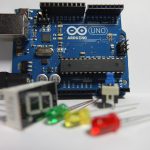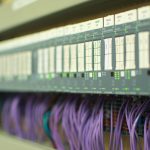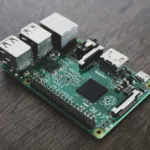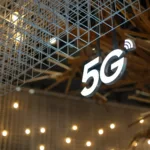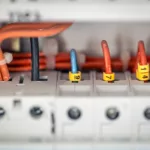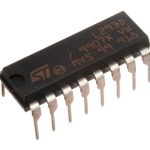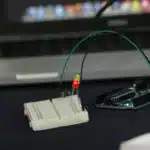
Introduction
The Industrial Internet of Things (IIoT) is an emerging milestone in the world of manufacturing and industry, providing user-desired solutions and applications. By successfully connecting machines, sensors, and devices to the internet, IIoT enables businesses to collect and analyse vast amounts of data, driving efficiency, productivity, and innovation. This article discusses the fundamental concepts of Industrial IoT solutions and delves into some of its most promising applications.
Understanding Industrial IoT: The Significance
The Industrial Internet of Things is known as the network comprising physical objects embedded with sensors, software, and other technologies. These technologies combine traditional industrial processes with modern digital capabilities to collect and exchange data with other connected devices and systems over the internet. Unlike the consumer-oriented IoT, which focuses on smart homes and wearable devices, IIoT is specifically designed to revolutionise various industries, including manufacturing, energy, agriculture, healthcare, transportation, and more. The significance of IIoT lies in its potential to enhance industrial operations, improve efficiency, reduce costs, and create new business models.
Industrial IoT: Exploring Its Crucial Solutions and Components
Industrial IoT involves complex processes that require multiple components, tools, and systems. Some of the crucial components and solutions of IIoT include:
- Sensors and Devices – IIoT relies on multiple sensors and devices that capture data from the physical world. These include temperature sensors, pressure sensors, cameras, and even RFID tags.
- Connectivity – Robust connectivity solutions, such as Wi-Fi, cellular networks, and Low-Power Wide-Area Networks (LPWAN), are essential for transmitting data from sensors to central systems.
- Data Processing – IIoT platforms employ powerful data processing techniques, including edge computing and cloud computing, to analyse the vast amount of sensor-generated real-time data.
- Analytics – Advanced analytics tools, such as machine learning algorithms and artificial intelligence, are used to extract actionable insights from the collected data.
- Visualisation – Data visualisation tools help transform complex data into intuitive dashboards and reports that enable informed decision-making.
- Security – As IIoT systems handle sensitive data, robust security measures are crucial to protect against cyber threats and data breaches.
The Broad Range Applications of Industrial IoT
The versatile solutions of IIoT have led to their adoption in various industries with promising applications. Some of the potential industrial IoT applications include:
- Remote Monitoring and Control
With IIoT, businesses can remotely monitor and control operations in real time. For instance, a factory manager can adjust machine settings or troubleshoot issues from a mobile device, reducing the need for physical presence and travel.
- Energy Management
Sustainability is a growing concern for businesses. IIoT enables precise monitoring of energy consumption and waste. Multiple enterprises can reduce their carbon footprint and lower operational costs by identifying areas where energy can be conserved.
- Predictive Maintenance
Predictive maintenance is important for multiple industrial settings, particularly for machinery industries. IIoT sensors continuously monitor the equipment conditions, detecting early signs of wear and tear or potential faults. By analysing this data, businesses can schedule maintenance before a breakdown occurs, reducing downtime and saving repair costs.
- Supply Chain Optimisation
IIoT is reshaping supply chain management by providing real-time visibility into the movement of goods. Sensors attached to shipping containers, vehicles, and warehouse shelves track the products’ location, temperature, and humidity. This data, ultimately, helps companies optimise routes, prevent spoilage, and improve overall efficiency.
- Quality Control
Manufacturers can ensure product quality by implementing IIoT solutions. Sensors and cameras can monitor the production process, detecting defects and anomalies in real-time–minimises defects and reduces the need for costly recalls.
- Asset Tracking
Tracking assets, such as tools, vehicles, and equipment, is crucial for asset-intensive industries like construction and logistics. IIoT solutions provide accurate location data, theft prevention, and utilisation insights, improving asset management.
- Environmental Monitoring
Industries with environmental compliance requirements, like chemical manufacturing and agriculture, use IIoT to monitor emissions, soil conditions, and weather patterns. This data helps businesses stay compliant and make informed decisions about resource allocation.
- Health and Safety
Worker safety is a top priority in industrial settings. IIoT devices like wearable sensors can monitor employees’ vital signs and exposure to hazards. In emergency scenarios, automatic alerts can be triggered, ensuring a rapid response.
Industrial IoT: Challenges and Considerations
The benefits of Industrial IoT are evident; however, implementing and managing IIoT solutions come with challenges, such as:
- Security Concerns – As IIoT systems handle sensitive data and control critical processes, security is a top concern. Protecting against cyber threats and ensuring data integrity is paramount.
- Interoperability – Many existing industrial systems were not designed with IoT in mind. Ensuring that new IoT solutions seamlessly integrate with legacy systems can be complex.
- Data Privacy – Collecting vast amounts of data raises questions about privacy and compliance with regulations like GDPR. Companies must establish clear data governance policies.
- Scalability – Industrial IoT solutions should be scalable to accommodate growing data volumes and device deployments.
Final Remarks
Industrial IoT solutions drive digital transformation in industries by providing actionable insights, reducing operational costs, and enhancing competitiveness. Its applications are diverse and far-reaching; however, businesses must navigate challenges such as security and interoperability to harness IIoT’s potential fully. As technology continues to evolve, it is expected to witness more exciting developments in the world of Industrial IoT, reshaping industries and driving progress.






